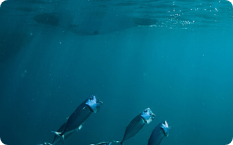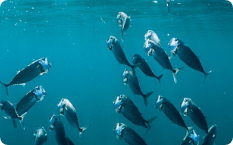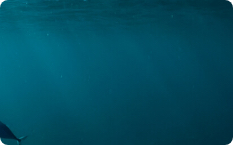At this side-event the European Research infrastructure European Marine Biological Resource Centre (EMBRC-ERIC) together with the Ocean Biodiversity Information System (OBIS) of the IOC’s International Oceanographic Data and Information Exchange (IODE) programme will present what eDNA can and cannot do, the growing capacity for genomic observation in Europe and beyond.
How eDNA is changing the game for protecting marine biodiversity ?
There is a broad agreement that global biodiversity is suffering a crisis, manifesting itself through accelerated biodiversity reduction, species extinction, and habitat loss. This crisis is caused by a combination of decades of anthropogenic pressures, including exploitation and pollution, coupled with accelerated climate change. The need to understand and predict the response of life to these pressures is more apparent than ever if we are to assure the ecosystem services that our society depends upon. Significant improvements need to be made to our monitoring and observation of marine biodiversity in order to keep track of the biodiversity crisis, identify solutions and restoration opportunities, and to quantify any improvements. DNA-based tools (so called “genomic observatories”) are emerging as a powerful, versatile and cost-effective tool for describing biodiversity, from the microbiome to the largest predators and grazers in the ecosystem. These tools have now matured to a stage where they can be implemented for routine, high-resolution data collection on biodiversity, significantly improving the abilities of governments and environmental agencies in ecosystem monitoring, and ultimately paving the way for a revolution in the way we observe life on earth.
At this side-event the European Research infrastructure European Marine Biological Resource Centre (EMBRC-ERIC) together with the Ocean Biodiversity Information System (OBIS) of the IOC’s International Oceanographic Data and Information Exchange (IODE) programme will present what eDNA can and cannot do, the growing capacity for genomic observation in Europe and beyond, and how these next-generation observatories are working to enable a network of cooperation through standardised, inclusive and cost effective techniques, open access to data, transparent and open protocols, and capacity building across the globe. This community has a realistic and actionable vision for making biological observations a reality across all major seas and oceans, enabling a comparable, global approach to understanding life in the sea and supporting fact-based decision making.
The side event will showcase a number of initiatives, projects and tools for genomic observation, as well as best practices, the integration of Open Science principles, and testimonials from UNESCO projects. We will end with a vision for the future and open the floor for debate.
Programme
13:00-13:30 Light lunch
13:30-13:35 Opening words, Representative of Flanders (TBD)
13:35-13:45 Introduction to eDNA potential and limitations. Craig Sherman, Deakin University, TBC
13:45-14:10 Use cases : Tools, protocols, standards and Open Science principles in genomic observations, with a focus on scalability:
- PacMAN (operational surveillance system) Dr Saara Suominen, UNESCO-IOC
- EMOBON (a coordinated observatory), Dr Ioulia Santi, EMBRC-ERIC
- eDNA expeditions (streamlining biodiversity monitoring through citizen science and policy & decision making), Ward Appeltans, UNESCO-IOC and Dr Fanny Douvere, UNESCO-WHC
14:10-14:20 Vision for the future: the UN Ocean Decade Programme “Ocean Biomolecular Observation Network (OBON), Dr Pier-Luigi Buttigieg, Alfred Wegener Institute, Germany
14:20-14:40 Q&A session, moderated by Dr Nicolas Pade, EMBRC-ERIC
14:40-14:45 Closing remarks, Ward Appeltans, UNESCO-IOC



















